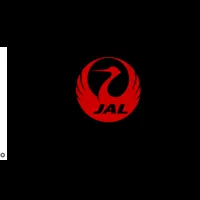
Sojern's 2025 Destination Marketing Report: Trends, Insights, and Future Directions
Sojern's 2025 State of Destination Marketing Report
Sojern, a pioneer in travel digital marketing, recently unveiled its comprehensive report titled "State of Destination Marketing 2025," which presents critical insights into the rapidly evolving landscape of destination marketing. Created in collaboration with Benchmark Research Partners and supported by various reputable organizations, including Brand USA and Destination Canada, this report builds on the findings from the previous year to identify key trends and challenges faced by destination marketing organizations (DMOs).
One of the most striking revelations from the report is that approximately 85% of DMOs intend to maintain or even increase their digital advertising budgets compared to the previous year. According to Sojern's Chief Revenue Officer, Noreen Henry, as DMOs invest more in marketing and leverage advanced strategies, they must also demonstrate a solid return on investment. This is crucial as they seek to engage travelers more effectively throughout the marketing funnel.
Digital Advertising Resilience
The insights derived from nearly 200 global DMOs, tourism authorities, and related organizations underscore the resilience of digital advertising. However, DMOs also face a multitude of obstacles. For example, 60% of the respondents cite clicks as their primary performance measure, while 54% struggle with demonstrating clear return on investment. Another critical challenge is tracking and attribution, as 37% of DMOs find it difficult to manage comprehensive campaigns effectively.
Programmatic advertising has become a focal point for DMOs, with 83% currently employing it. The efficiency, precision, and cost-effectiveness of programmatic advertising offer DMOs the tools needed to make better, data-driven decisions. Traditional channels, such as display ads (97%), social media (90%), and search engine marketing (80%), remain fundamental aspects of DMOs' paid media strategies.
The Rise of AI in Marketing
Another fascinating aspect of the report is the increasing incorporation of artificial intelligence (AI) in marketing initiatives. Currently, 63% of DMOs are using AI for content creation, while only 28% have adopted AI for data analysis. This gap highlights a significant opportunity for DMOs to further harness AI’s potential to gain deeper insights and refine their decision-making processes.
The trend is shifting from seasonal marketing campaigns to always-on strategies. More than half of the DMOs (52%) now prefer this approach, as it leads to more consistent results. Notably, 42% of DMOs have observed improved brand awareness as the primary advantage of an always-on campaign. This prolonged engagement can significantly enhance their brand presence and resonate more effectively with potential travelers.
The Importance of Brand Awareness
Over the last four years, DMOs have primarily focused on driving immediate bookings in the wake of the COVID-19 pandemic. However, as stability returns to the industry, there's a visible pivot toward long-term strategies that emphasize brand awareness. The report indicates a shift to a 50/50 balance between stage-specific and full-funnel strategies, contrasting sharply with last year’s overwhelming 70% emphasis on full-funnel approaches.
Moreover, while DMOs are honing in on specific demographics, like outdoor enthusiasts (66%), there is still a significant portion (85%) that struggles with advanced personalization techniques that tailor offerings in real time across various channels. This gap creates a substantial opportunity for DMOs to craft more individualized experiences for travelers throughout their journey.
Navigating the Data Landscape
Data remains a powerful asset for DMOs, yet many report difficulties in utilizing it effectively. Over half (51%) see data analysis as a major challenge, and 45% struggle to apply that data to develop actionable marketing strategies. Nonetheless, an impressive 84% of DMOs are leveraging data for digital marketing insights, indicating that while challenges exist, the willingness to use data continues to rise.
Collaborative marketing efforts are also gaining momentum, especially in Europe, with DMOs increasingly forming partnerships with hotels, attractions, and airlines to maximize resources and reach wider audiences. Notably, co-op marketing initiatives reported a 16% year-over-year increase.
Embracing Social Media and Video Content
Social media remains the dominant force in DMOs’ marketing efforts, with a staggering 91% engaging on these platforms, particularly Facebook and Instagram. However, emerging formats like connected TV (CTV) and short-form videos are becoming increasingly vital for creating immersive campaigns that captivate travelers.
In conclusion, the "State of Destination Marketing 2025" report not only highlights the current landscape but also sets the stage for future strategies that DMOs can adopt. By adopting advanced technologies, rebalancing marketing approaches, and placing a stronger emphasis on brand recognition, DMOs are better positioned to thrive in a challenging but rapidly changing market.
To delve deeper into the findings, download the full report from Sojern and be part of the conversation shaping the future of destination marketing.
Topics Travel)










【About Using Articles】
You can freely use the title and article content by linking to the page where the article is posted.
※ Images cannot be used.
【About Links】
Links are free to use.